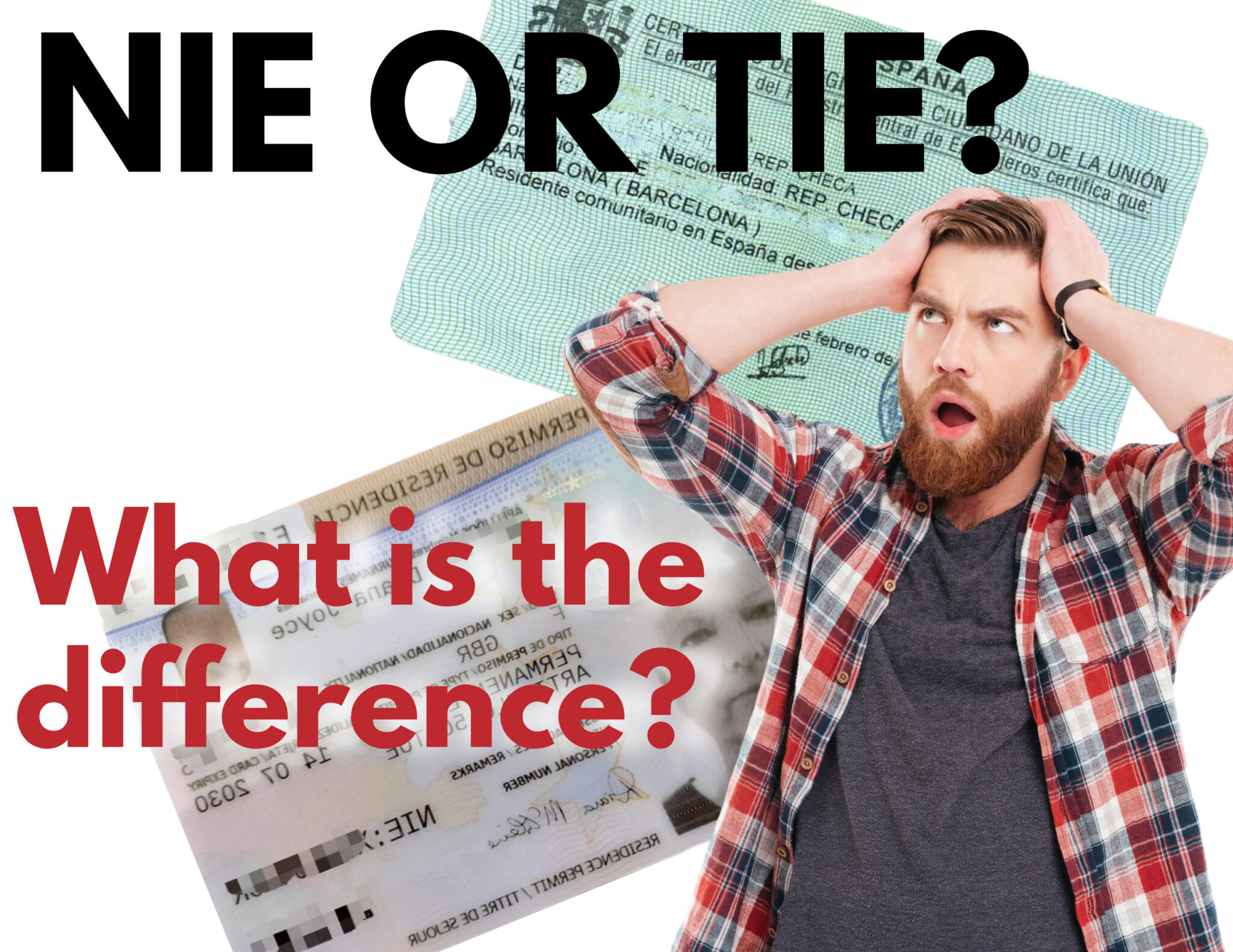If you are a UK citizen who wants to buy a property in Spain as a holiday home, move to the country part-time, or relocate permanently, you are probably confused regarding the documents you need. This article will unravel the confusion around the Spanish NIE, TIE, and residency permits.
The NIE
NIE stands for Numero de Identidad de Extranjero, which translated to English is Identification Number for Foreigners. All foreigners engaging in financial activities or transactions need an NIE number in Spain.
The NIE is simply a number. It is unique to the holder. You will need an NIE to purchase a property, open a bank account, buy a car, and accomplish other similar activities. If your visits to Spain are sporadic and you use your property as a holiday home, an NIE number is all you need to get by and survive Spanish bureaucracy.
When asked for your NIE, simply stating the number is sufficient. Authorities will rarely ask to see the actual NIE document. If you ever have to show ID with photo proof, your passport is the most appropriate document, as an NIE card does not include a photo of the holder.
The TIE
TIE stands for Tarjeta de Identidad Extranjero (Foreigner Identity Card) and is a credit card-sized card. The TIE is a biometric card issued to non-EU foreigners authorised to stay in Spain for longer than the standard period. It has only been relevant for British citizens since Brexit when the TIE card was required to replace the NIE.
To say the TIE replaced the NIE is not entirely correct, as the NIE number is displayed on the TIE card and is the number still used for tax purposes and any other financial transactions. However, post-Brexit, the TIE card is required as proof that the holder has permission to reside in Spain, whereas an NIE number does not give you the right to stay in the country, but is merely a number used to record fiscal activities.
NIE Vs. TIE
The NIE number never changes, even if the financial or lifestyle status of the holder does. It identifies a person in every area of their daily life in Spain. It is written on a driver’s license, health insurance card and required for numerous other concerns. Even drivers delivering parcels will sometimes ask for your NIE number. But unlike pre-Brexit, having an NIE does not permit you to stay in Spain.
A TIE card, however, is proof you have permission to remain in Spain for a specified time. It contains the holder’s information on their status in the country. The TIE must be renewed when the defined number of months or years are up. For those who lived in Spain pre-Brexit, obtaining the TIE was straightforward as long as they could provide proof of living in Spain before the cut-off date of December 31, 2020. Most UK residents who lived in Spain before Brexit now hold a TIE card valid for ten years, and renewal will simply be a formality.
If you want to move to Spain permanently and did not live in Spain before Brexit, the paperwork required is more extensive, as free movement within the EU no longer applies to British nationals. UK residents can visit Spain (or another country in the Schengen Area) for up to 90 days within a 180-day period without applying for a visa, but you will need a visa if you wish to stay longer.
Residency Visas
In 2022, moving from the UK to Spain mid to long-term requires British nationals to acquire a visa corresponding to their reason for the stay. The cost of a visa for an adult is currently around €80.
Residency visas are granted for work, study, and starting a company in Spain. You can also apply for a non-lucrative visa, which requires proof that you have enough funds to live in Spain without working; for example, you are retired with a pension which provides you with adequate money to live on. You can also get a visa as a family member of an EU national or invest €500,000 in property and attain a Golden Visa.
Applying and gaining residency successfully depends very much on your reasons to stay in Spain and your individual circumstances. Broadly speaking, to apply for residency, you will need an NIE number, proof of income or pension, Spanish private health insurance, a receipt showing you have paid the application payment, a filled-in residency form, plus your passport and two photographs. While you can manage the process yourself, it is much easier to hire a gestor (a private professional who deals with Spanish administrative bureaucracy) to handle the paperwork on your behalf. However, even when using a gestor, you must pick visit the National Police station or immigration department in person twice, once for fingerprinting and later to collect the TIE card.
Initially, your application will be for temporary residency, which is considered a stay of more than 90 days and less than five years. The immigration department will issue you with a temporary TIE card. Depending on the length of time granted, you may have to renew your temporary TIE several times until you have lived in Spain for five years, when you can apply for permanent residence.
We hope this post has cleared up any confusion you may have had regarding NIEs, TIEs, and post-Brexit residency. If you have any queries related to buying a property in Spain and residency, get in touch, and we will advise you on how to proceed.

